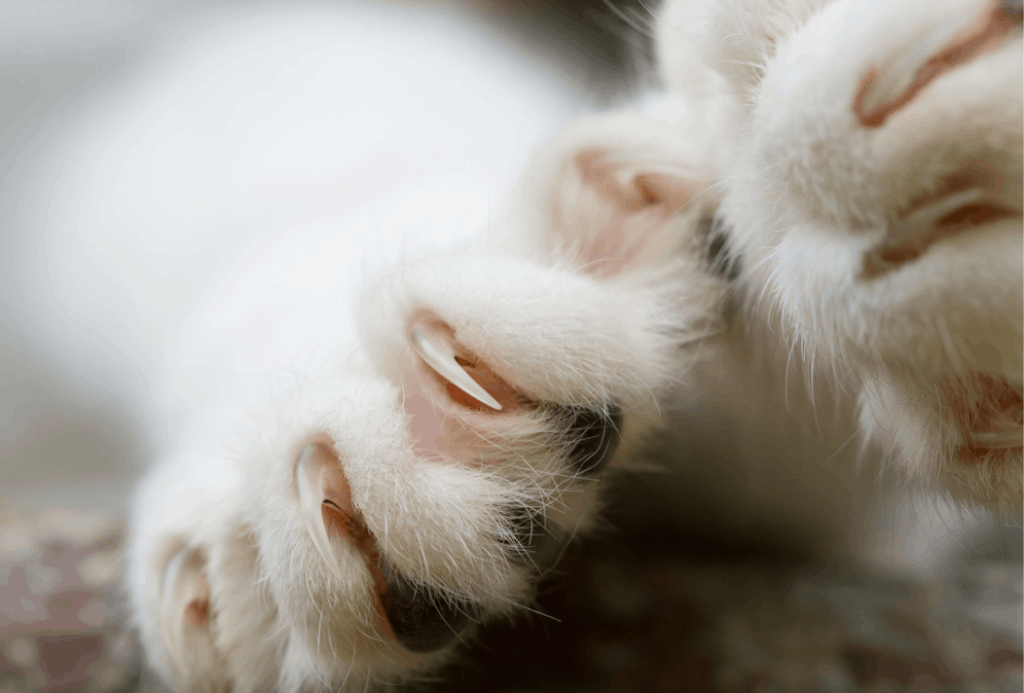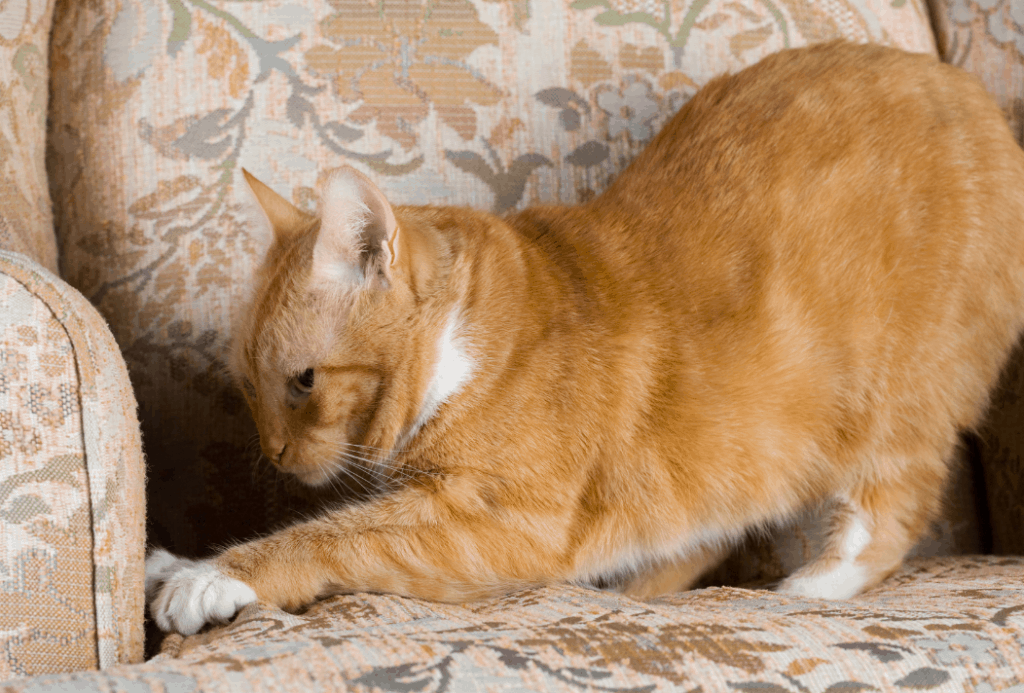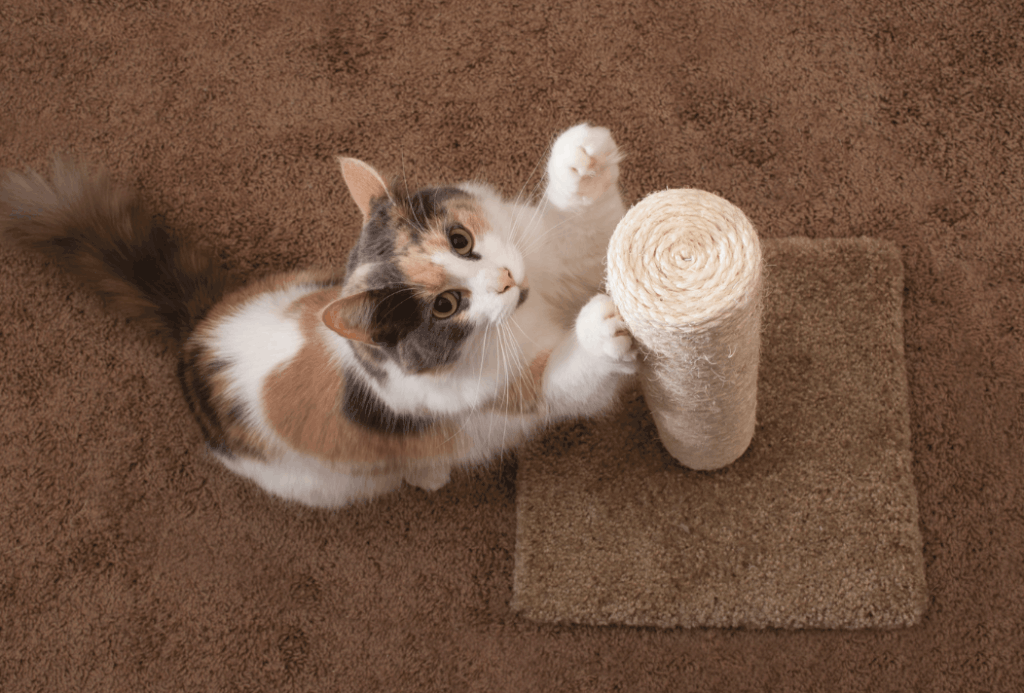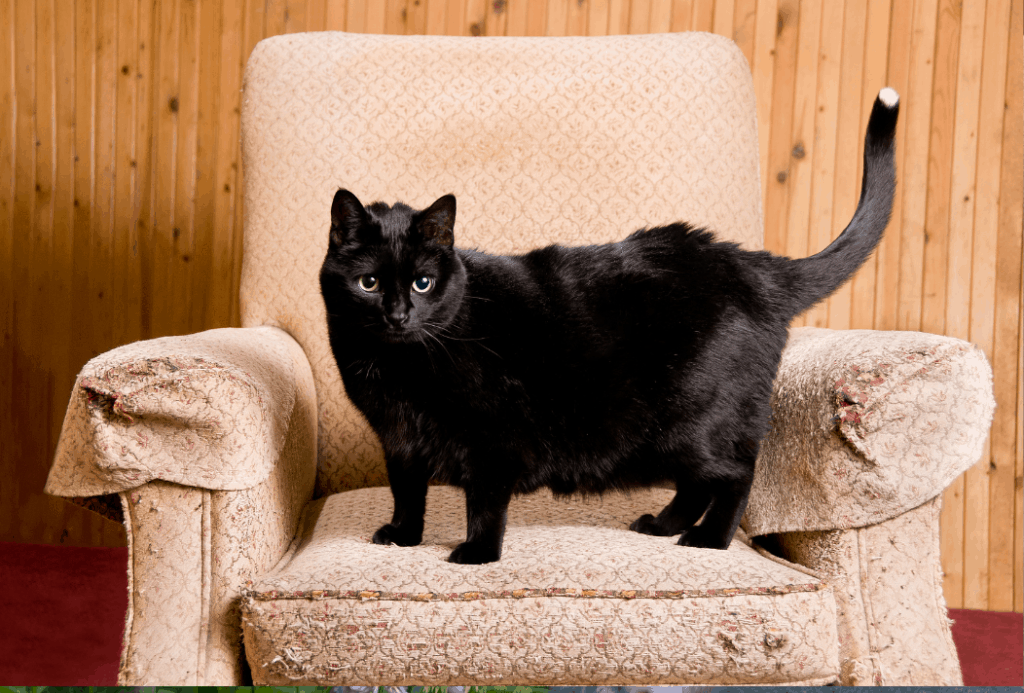How to Keep a Cat from Scratching Furniture
Sharp claws can help cats protect themselves from predators in the wild. Indoor cats usually don’t have much to worry about, but they still need to sharpen their claws for the many health benefits!
Most cats love a good scratching post, but what happens when they pick a less desirable place like your sofa or the door frame to another room? In this article we discuss some of the reasons why your cat may be scratching your furniture and what you can do to deter the behavior.
Why do cats scratch and claw?
Removes the outer shell of their claws
Cats tend to knead their paws for numerous reasons. When scratching their claws on surfaces, the outer shell that develops around the claws is physically removed.

If you’ve ever seen an older cat who has nails that are thicker than the others, this is because the outer shell is still intact. Seniors with arthritis are less likely to knead their paws as often.
They’re depositing their scent!
Underneath a cat’s paws, there are scent and sweat glands. By scratching their claws on certain surfaces, pheromones from their glands are deposited onto the scratched surface. It sends a signal or message to other cats in the household. The physical scratch marks in furniture or doorframes can also serve as a visual marker that tells other cats that “this is mine” or “I’ve been here.”

A good stretch
Scratching also helps cats to stretch out their bodies. It is more comfortable and relaxing to stretch out to their maximum height. If even the choice between a short versus tall scratching post, cats are more likely to choose the taller post because it gives them more room to stretch and scratch.
How to prevent inappropriate scratching
With some time and patience, it is possible to train cats to avoid certain surfaces for scratching.
Don’t declaw
Declawing is not recommended because it involves the amputation of one third of their digits. It can cause painful surgical recovery plus chronic pain, arthritis, and behavioral disorders. To this date, the procedure is banned in over 22 countries and in eight Californian cities.
Clip your cat’s nails regularly
For best results, cat’s claws should be clipped every two to three weeks. Nails that are clipped short are less likely to be sharp and destructive.
Rubber caps
You can also purchase products like Soft Paws, which are small rubber caps that are glued onto the ends of the cat’s claws. These are safe and easy to apply, though you should ask for assistance with restraint if your cat is nervous. After several weeks, natural claw growth causes the caps to pop off, and they can be reapplied.
Encourage scratching in the right places!
Since there are benefits to scratching, you can encourage your cat to use surfaces made for scratching. Avoid forcing your cat to use whichever product or post you’ve acquired. If you buy a scratching post, the taller ones are ideal so that a cat can fully stretch out when they scratch. To encourage using the post, Feliway makes a product called Feliscratch. It contains a calming pheromone which is meant to attract cats to the post. Catnip is another way to encourage scratching.

Focusing on further aspects of environmental enrichment can help. Multiple scratching posts throughout the house can help. If you are in an apartment and have smaller space, cat trees that go to the ceiling can take up less horizontal space. It also helps to have multiple types of toys available. These are toys that can be chewed or chased like catnip mice, laser pointers, feather toys, and toys on the ends of string. Keep in mind that string toys should not be left unsupervised because ingested string can become trapped in the intestines, causing an obstruction.
Apply a scratcher in front of the targeted sofa
Some scratchers lie horizontally instead of vertically, and these can be strategically placed in front of furniture that is being scratched. If the sofa is being scratched, you could also apply a cover over it. The extra fabric protects the sofa and will be less stable for the digging of claws.

Deterrents to furniture scratching
Some cat owners apply double-sided tape to the object that is being scratched because the sticky surface discourages scratching. Other owners have reported success with using citrus spray or aluminum foil as deterrents. Another trick is to take a plastic runner or mat and then turn it upside down. The little spikes on the bottom of the runner will discourage scratching.
Scratching is an important activity for a cat
It keeps their claws healthy and sharp, and it helps with communicating to other animals in the environment. If cats begin clawing undesirable objects like furniture and door frames, it is possible to train this behavior away. Environmental enrichment is an important factor in keeping cats physically and mentally healthy. When done right, it can discourage inappropriate scratching in your home.
The post How to Keep a Cat from Scratching Furniture appeared first on VetBabble.





Post a Comment